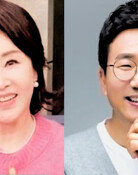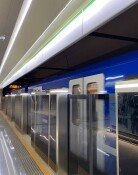Supreme Court’s secret principles
Supreme Court’s secret principles
Posted July. 30, 2018 07:48,
Updated July. 30, 2018 07:48
Next to the Supreme Prosecutor’s Office is a six-story building of the National Digital Forensic Center built in October 2008. Judges at the Supreme Prosecutor’s Office closed the curtains when having a conversation at the office while the forensic center was under construction. They were concerned that their conversation would be tapped with state-of-the-art eavesdropping devices as the largest digital analysis equipment was to be set up nearby.
A judicial panel which includes 13 judges including the Chief Justice and 12 justices of the Supreme Court is held on the 11th floor of the Supreme Court office on the third Thursday every month. An inspection is done to check whether the room is tapped or not. And perhaps, that would be because the office faces the Supreme Prosecutor’s Office. The meeting room has a round table and 13 chairs. All meetings at the Supreme Court other than this meeting are recorded or written down, but no stenographer or recording device is allowed in this room.
There was a suggestion to record the meeting while Chief Justice Lee Yong-hoon held office. But it was rejected because “that would prevent judges from speaking and discussing freely.” When I suggested several justices that Korea’s Supreme Court should publish books by recording judicial panels like the United States, they only said, “It is prohibited by law.” They were saying that based on the court organization law that rules “The process of agreement shall not be open to the public.” But I was not able to find who made this article of the law enacted on August 15, 1949 on what ground. This article survived through more than 60 revisions.
The prosecution recently requested the Supreme Court to provide hard disks and e-mail records of former and incumbent justices. But the Supreme Court refused to do so, saying, “The process of agreement could leak.” The prosecution believes that the lawsuit by victims who were compulsorily mobilized during the Japanese occupation and the criminal lawsuit contingency fee case are related to case bribery. If the Supreme Court refuses to provide evidence, prosecutors would have to rely on memories of participants.
To dispel suspicion over the case bribery, the Supreme Court should prove that the agreement was made for a different reason rather than the Office of Court Administration document. If not, people will remain suspicious. This investigation can be an opportunity to revise the law. If the Supreme Court is concerned about the agreement process leaking and justices suffering a disadvantage, they can record the meetings and uncase the recorded documents several decades later. In democracy, people get the government they deserve. The Supreme Court is not an exception.
Won-Soo Jung needjung@donga.com







